" NORGE " EXPEDITION |
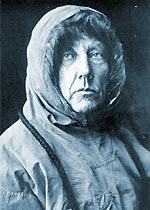 |
Umberto Nobile (right) was one of the pioneers and personalities of the highest in the history of Italian aviation. Aeronautical engineer, he became famous for having flown the first plane flew over the North Pole, and especially for his two crossings on the airship center. Roald Amundsen (left) is a Norwegian polar explorer. It is the first man to reach the South Pole in 1911. Leave in May 11, Spitsbergen aboard the airship Norge, with sponsor American Lincoln Ellsworth, they arrived four days later on the shores of the Bering Strait. Un trajet à vol d'oiseau de 3.400 kilomètres environ, beaucoup plus selon Nobile. A trip to the bird flies 3,400 miles, much as Nobile. |
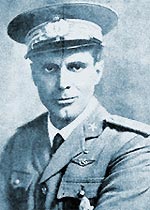 |
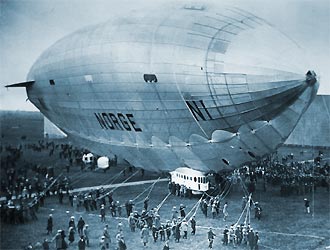 |
Some details of the Norge, its staff and equipment. The airship is 106 feet long with a volume of 18,500 m3, its load limit is 10.3 tons. With three engines it is 115 km / h and with only two of 70 Km / h, the latter bearing the hourly consumption of gasoline and oil falls to 95 pounds. Since the journey to make, nearly 7 tons of fuel and oil were shipped. |
The entrance to the port, as well as the output of an airship, requires the assistance of many staff labor are hardly abundant at Ny Aalesund, the Norwegian government had sent a warship to King's Bay to assist the expedition. With this reinforcement and lack of wind at the time of arrival, the Norge was stored in a hangar without incident. The first part of the journey, one that aroused the greatest anxiety among specialists, and was happily ended. During the journey from Rome to Spitsbergen (7600 kilometers by counting all the zigzags of the road), no organ of the airship had experienced any failure, all had worked to perfection. This success allowed the highest expectations for future operations. |
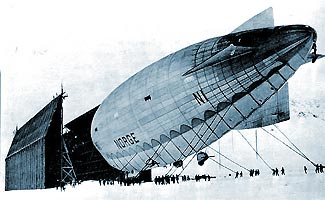 |
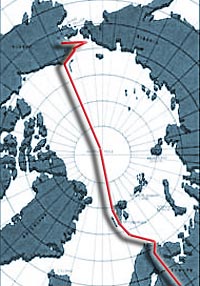 |
The engineers proceeded to a thorough review of the engines in order to get some air under the right conditions. Mais à peine les préparatifs sont-ils commencés que la brise " force " et le départ retardé. But hardly preparations are that they started that a gale warning and the delayed departure. On the morning of May 11, the breeze dies down, the skies cleared and soon a bright sun shines in a calm. There's more hesitation and 9 H.35 the difficult out of the hangar is complete. Once out of King's Bay, following the airship to the North West coast of Spitsbergen, and, after flying over the Danish Island, committed over the great ice, heading straight toward the pole . Finally, May 12 at a time, Lieutenant Ruser-Larsen, who serves as an officer of the watch on board the Norge, announces the arrival at the North Pole. The victory is won! Once the pole, the Norge several circuits described above that point, then successively Amundsen, Ellsworth and Nobile threw overboard on the ice, the flags of their countries. At the pole, the cape was put right on the South Point Barrow, the northernmost cape of Alaska. The airship makes a good road in that direction at a speed of 80 km / h. After radio silence for several days, a telegram announced the arrival of the shipment Teller, north of Nome, May 15. The expedition has done a magnificent achievement. After Travel Norge, Amundsen announced his retirement. |
ITALIA EXPEDITION |
Nobile returned to the North Pole as commander of the airship Italia. The Italia is a semi-rigid dirigible-shaped cigar with a volume of 18,500 cubic meters, 115 meters long and devoid of any metal frame except the front, allowing it to anchor itself to a mast and it provides a certain rigidity made only by the pressure of hydrogen is found in cells located in the upper part of the envelope. Below, compartments are filled with air which variable pressure kept the envelope taut. |
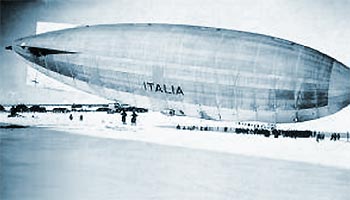 |
The aircraft is powered by three Maybach engines of 2,500 hp for a top speed of 120 km/ h. |
Nobile makes contact with the vessel's basic supply and demand a reinforcement of troops to help in landing. His commander Romagna refuses to provide any assistance whatsoever pretext that the ship's men were not required to perform chores on land. These were the minor base in Ny Aalesund who after two hours of effort amarrèrent the airship to the mast. Projects Nobile, having repaired the engine failed, were to perform five major reconnaissance flights in May and the first days of June On May 23, second recognition with favorable wind conditions for the moment, but would no longer be in the path of return to King's Bay May 24. Nobile understood that the expedition was really in danger. He was unable to land as scheduled because of bad weather. Nobile ordered to cut the engine and dump the equalization channel, but the fall was swift and it probably crashed because of ice buildup on the airship and overload that followed. Ten men, including Nobile, were thrown on the ice while the airship was gaining height, taking with him the other crew members, destined to disappear without trace. The survivors, fortunately, found themselves surrounded by material fell with the impact of the gondola, food, radio and the famous red tent in which they adapted to live for seven weeks. Amundsen did not hesitate to participate in research. He embarks on board a French aircraft, the Latham 47, with two teammates, Rene Guilbaud and Gilbert Brazy, and departed Tromsø June 18, 1928. The aircraft never returned. We find the wreck several months later and a primitive raft made up of a float and a can, a sign that men had survived the crash. After months of research, Nobile was saved with a little Swedish aircraft. In total, seven of the crew perished in Italia. |
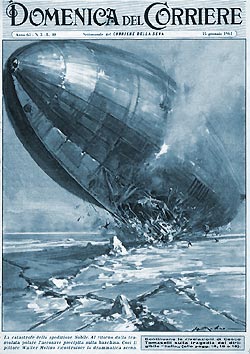 |
Amundsen & Nobile on North pole 1926/1928 part1 (Norge) |
Amundsen & Nobile on North pole 1926/1928 part2 (Italia) |